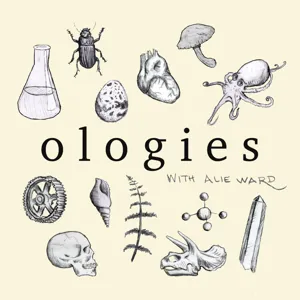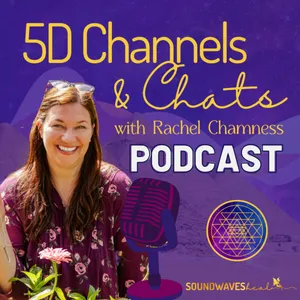Podcast Summary
Exploring the Concept of Time Dilation and Its Potential for Time Travel: Time dilation, a theory in relativity, suggests moving at high speeds could slow down time, opening up possibilities for future travel. While not yet tested on humans, it's a captivating concept in science and fiction.
Time dilation, a concept in Einstein's theory of relativity, can theoretically allow someone to travel into the future by moving at high speeds. This means their time would pass slower than those who remain on Earth. Although it's challenging to test this on humans, the concept has been explored in science fiction, such as Star Trek's warp drive and the movie "Galaxy Quest." While these are works of fiction, they show the fascination and intrigue surrounding the possibilities of time travel. Alan Alda, a guest on the show, joked about the potential benefits of time travel, like buying stocks or observing historical events, but in reality, it remains a fascinating concept in the realm of science and pop culture.
Could we travel back in time?: Theoretically, time travel is possible but paradoxes like the grandfather paradox make it unlikely. Our understanding of the universe may be limited by our own dimensionality.
Our existence is limited to the four dimensions of space and time, often referred to as being "prisoners of the present." However, if we could step outside of these dimensions, we could theoretically reenter our timeline at any point. This concept, known as the grandfather paradox, raises complex questions about the possibility of time travel and the potential consequences of altering the past. Despite these intriguing ideas, it's important to note that, according to physicists like Stephen Hawking, traveling back in time is not possible due to paradoxes like the grandfather paradox. Additionally, the universe may not be limited to four dimensions; higher dimensions may exist that we cannot perceive or access. Using an analogy, if an ant is confined to a two-dimensional sheet of paper, we as higher-dimensional beings could help the ant escape by instructing it to step out and back down. However, the ant, being limited to its two dimensions, cannot understand this solution. Similarly, our understanding of the universe may be limited by our own dimensionality.
Exploring the Complexity of Time and Dimensional Travel: Higher dimensional beings could theoretically escape a 3D jail cell by stepping out in a higher dimension, but time travel to the past or future remains a theoretical concept and cannot be achieved in reality.
The concept of time and dimensional travel is a complex and fascinating topic, which was explored in the conversation between the speaker and the scientist. The speaker suggested that higher dimensional beings could easily escape a three-dimensional jail cell by stepping out in a higher dimension and then returning. They also discussed the possibility of traveling to the future by going around the earth at a high speed or being near a massive object, but clarified that this was a theoretical concept and not something that could be achieved in real life. The speaker also mentioned the idea of being able to go back in time and interact with a past that does not interfere with one's own timeline, but again, emphasized that this was a theoretical concept and not something that could be done in reality. The conversation also touched upon the idea that time is flexible and can be manipulated on paper through mathematical equations, but that in real life, we do not possess the power to do so. Overall, the conversation highlighted the intrigue and complexity of the concept of time and dimensional travel, and the limitations of what can be achieved in reality versus what can be theorized.
Theoretical physics discoveries pave the way for future experiments: Theoretical physics discoveries, like Dirac's positron, provide a foundation for future scientific advancements, even if the concepts seem beyond our current understanding or experience.
The discoveries made through theoretical physics, like the existence of antimatter, can serve as instructions for future experiments and discoveries, even if the concepts involved, such as time travel, seem beyond our current understanding or experience. Dirac's discovery of the positron, a solution to an equation that was the opposite of an electron, paved the way for the experimental discovery of antimatter before it became a staple of science fiction. The machinery and nature of science itself lies in the ability to make predictions on paper, even if we cannot fully comprehend or experience them at the time. While we may not be able to travel back in time ourselves, the equations that describe such phenomena serve as a foundation for future scientific advancements.
The interplay between mathematics and imagination in understanding higher dimensions: Mathematical equations can lead us to new concepts that defy our current imagination, which can eventually be applied to our understanding of the universe. Our progress may depend on expanding our collective imagination to create new equations and concepts.
Imagination and mathematics are interconnected in the pursuit of understanding higher dimensions, even when our current understanding falls short of fully grasping what these dimensions might be. The example of Lobachevsky's non-Euclidean geometry illustrates how mathematical equations can lead us to new concepts that defy our current imagination, and how these new concepts can eventually be applied to our understanding of the universe. However, we currently lack the ability to picture or describe these higher dimensions, and our progress may depend on expanding our collective imagination to create new equations and concepts. So, while we may not have the answer to time travel or access to higher dimensions just yet, the ongoing interplay between mathematics and imagination keeps us moving forward in our quest for knowledge.
Understanding the properties of shapes in different dimensions: Critically evaluate extraordinary claims based on scientific evidence, not belief or unverifiable practices.
The dimensionality of shapes, such as squares, cubes, and higher-dimensional objects, plays a crucial role in understanding their properties. For instance, a square is a two-dimensional shape with four sides, each being a one-dimensional line segment. A cube is a three-dimensional object with six faces, each being a square. A four-dimensional cube has eight sides, which are three-dimensional cubes. While discussing the prevalence of pseudoscience, the speakers expressed concern about the lack of critical thinking and reliance on belief over evidence. They shared examples of questionable practices, such as communicating with dead people for a fee, which are not falsifiable or verifiable. These examples underscore the importance of basing our beliefs on sound scientific evidence and questioning the extraordinary claims that defy the laws of physics.
Understanding the Unexplainable: The Role of Science and Experimentation: Science relies on experimentation and evidence, not intuition or imagination, to determine truths about the universe.
While our senses and intuition served us well in understanding the physical world up until the 20th century, the discoveries of quantum mechanics and other advanced scientific concepts have shown us that the universe behaves in ways that defy our everyday experiences. This can make it challenging to explain these concepts to the general public, as people may be tempted to believe in anything they can imagine, regardless of whether there's evidence to support it. However, it's important to remember that the scientific process relies on experimentation and evidence to determine what is true, rather than relying on our senses or intuition alone. The relationship between theory and experiment is crucial in science, with theories leading the way and experiments providing evidence to support or disprove them. Even when we encounter phenomena that we don't yet understand, such as dark matter and dark energy, it's important to continue investigating them through scientific methods rather than relying on speculation or imagination alone.
Mysteries of the Universe: Dark Matter and Dark Energy: Despite understanding 4% of the universe, the remaining 96% of dark matter and dark energy remains a mystery, driving the expansion and structure of the universe. Search for life beyond Earth focuses on carbon-based life, but unknown forms like silicon-based life might exist in extreme environments.
While we have a good understanding of the 4% of the universe governed by our laws of physics, the remaining 96% - dark matter and dark energy - remains a mystery. We don't know what they are or what properties they possess. This is significant because these unidentified entities are driving the expansion and structure of the universe. As for the search for life beyond Earth, we focus on what we know - carbon-based life as it exists on our planet. However, it's important to remember that we don't know what we don't know, and designing experiments to search for unknown life forms presents a challenge. Additionally, extreme temperatures and conditions on planets like Venus and Mars make it unlikely that carbon-based life exists there. Instead, alternative forms of life, such as those based on silicon, might be more suitable for such environments. Ultimately, the unknown aspects of the universe and the potential for life beyond Earth serve as intriguing areas for ongoing research and exploration.
Predictions in physics based on data and laws of physics: Science relies on existing data and laws of physics to validate predictions in physics, allowing for accurate predictions despite limitations in current knowledge
While there are many intriguing hypotheses and mathematical models in physics, not all of them can be easily tested through experiments. Instead, the validity of these predictions is based on how well the parameters of these models are constrained by existing data. The confidence in these predictions comes from the fact that they align with previously observed phenomena and the well-established laws of physics. For instance, the laws of gravity are so well understood that we can predict with high precision how a spacecraft will land on Mars, even though we haven't practiced landing on Mars with that level of accuracy. So, while there are limitations to our current knowledge, the power of science lies in the ability to make accurate predictions based on the well-established principles and laws that govern the physical world.
The universe might not be the only one in existence: Latest theories suggest our expanding universe could be part of a larger metaverse with multiple universes continuously spawning and going in and out of existence
Our current understanding of the universe suggests it might not be the only one in existence. The concept of a multiverse, where multiple universes are continuously being spawned and going in and out of existence, is a theory that has gained traction in quantum physics and gravitational physics. We used to believe that Earth was the center of the universe, but we now know it's just one of many planets in our solar system. Similarly, we used to believe that our galaxy was the only one in the universe, but Hubble showed us that there are billions of other galaxies out there. So, why should we assume that there is only one universe? The latest theories suggest that our expanding universe might not be the only one, and there could be other universes in a continuously frothing foam of a metaverse. This is a mind-boggling concept, but it's an exciting one that challenges our understanding of the universe and our place in it. Keep looking up!





